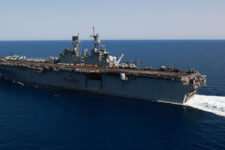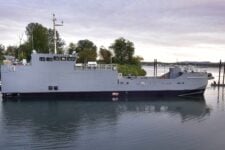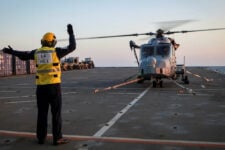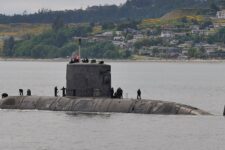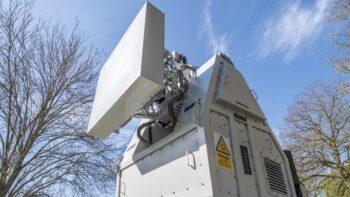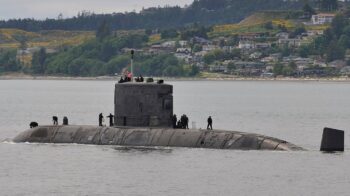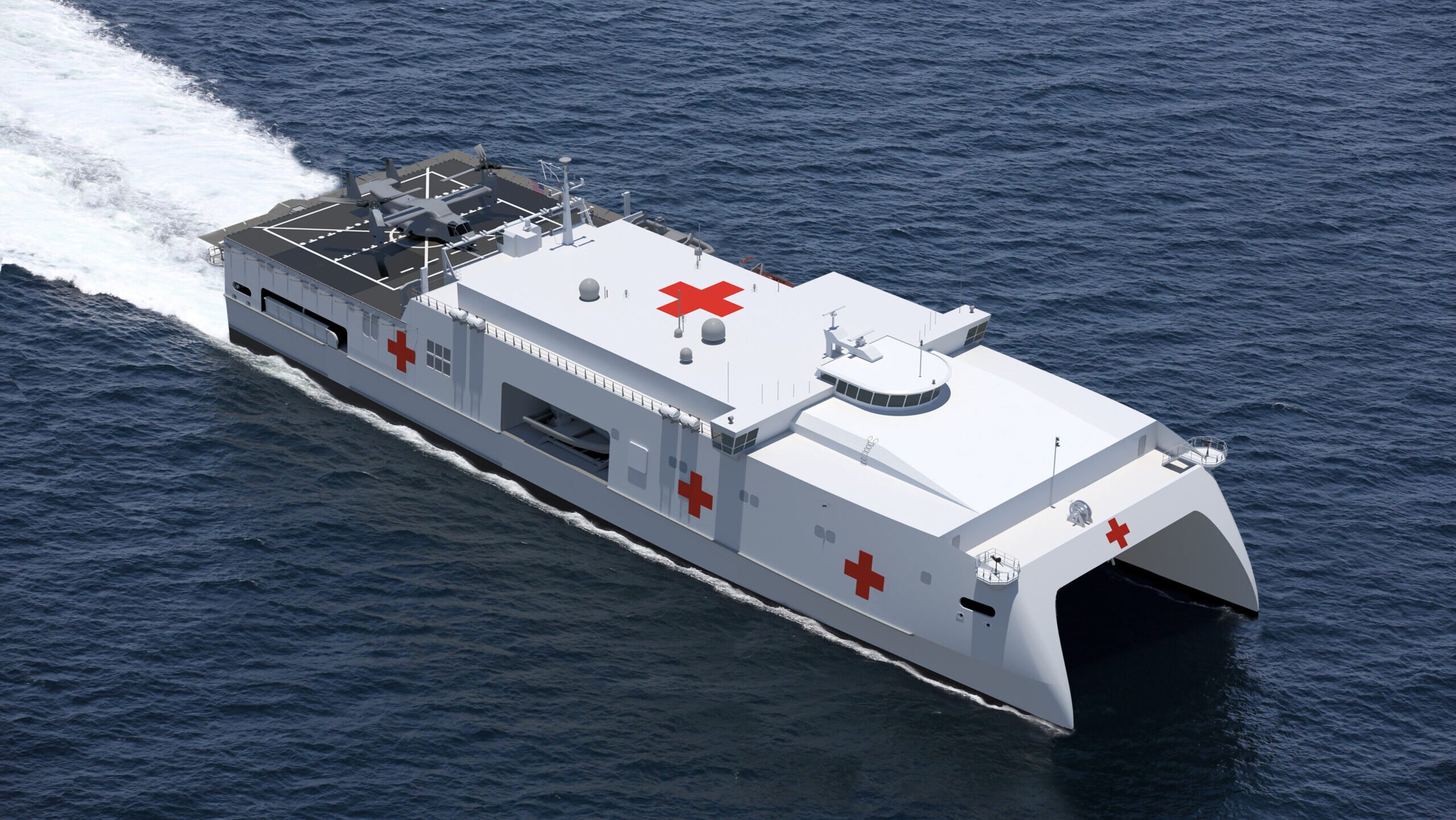
A graphic rendering of an expeditionary medical ship. (Courtesy of Austal USA)
SNA 2024 — Alabama-based shipbuilder Austal USA says its new expeditionary medical ship will provide the US Navy with a “highly capable ambulance to shuttle casualties” from the battlefield in ways the service’s storied hospital ships were not designed.
The legacy hospital ships “are capable platforms, but they’re slow. They [have a] very deep draft so they can’t access many ports,” Larry Ryder, vice president at Austal USA for business development and external affairs, told Breaking Defense in an interview Wednesday ahead of next week’s annual Surface Navy Association symposium. “Often you see in these engagement activities, they’re anchored a mile out at sea instead of being able to pull into these smaller ports.”
That will not be a problem for the smaller, more maneuverable expeditionary medical ships, Ryder said.
The Navy awarded Austal a contract modification worth roughly $867 million on Dec. 21 to design and build three Bethesda-class expeditionary medical ships (EMS), aluminum-hulled catamarans that, from the outside, are derived from the Navy’s expeditionary fast transport (EPF) vessels, also made by Austal. But from the interior, Ryder said, the new ship will look nothing like the EPFs, and instead will be optimized to quickly move wounded patients from triage to operating rooms and then recovery.
Navy Secretary Carlos Del Toro in May announced the first EMS would be named Bethesda in honor of the Navy base in Maryland widely known for housing Walter Reed National Military Medical Center.
RELATED: Austal Envisions Smaller, More Agile Hospital Ships To Replace Navy Legends
Since the 1980s, the Navy’s premiere medical ship capability has remained the 1,000-bed hospital ships Comfort and Mercy, each traditionally homeported on either side of the country and easily spotted due to the giant red crosses adorning their white hulls. While the ships have become famous through numerous humanitarian relief missions — including a visit to New York City in 2020 during the rise of the coronavirus pandemic — they are also at the end of their useful service lives, making them costly to maintain and operate.
“The EMS is designed to respond and provide care at a more rapid pace than their predecessors, USNS Mercy and USNS Comfort, sailing at speeds of at least 30 knots with a range of 5,500 nautical miles at 24 knots,” according to a May 2023 Navy statement announcing Bethesda as EMS-1’s name.
The first EMS is expected to begin construction in spring 2025, and a year later the company is scheduled to deliver its last EPF, Ryder said. The final EPFs in the production line are also being outfitted with limited medical support capabilities similar to those slated for installation on the EMSs.
When asked if the three ships represent the entire program of record, a Navy spokesperson told Breaking Defense after this report was originally published that the three hulls “are a program of record; and they are the ones associated with the award. Currently, there are no additional ships planned.”
The contract award represents at least a temporary continuation of Austal’s shrinking aluminum shipbuilding production lines. The company, an American subsidiary of the eponymous Australian shipbuilder, for roughly two decades had built only aluminum-hulled vessels at its shipyard in Mobile, Ala. But, in 2022, Austal was able to open $100 million-worth of steel shipbuilding facilities following a deal with the Pentagon to help kickstart the expansion.
Since then, the company has scored several notable contracts using its new facilities, such as the Coast Guard’s Offshore Patrol Cutter.
In addition to the three EMS, Austal’s aluminum-based construction efforts remaining include two Independence-class Littoral Combat Ships and three Expeditionary Fast Transports. The company is also using aluminum to build the deck houses for the Coast Guard’s new cutters and certain aircraft elevators that HII’s Newport News Shipbuilding will install on the Gerald Ford-class aircraft carriers.
“EMS may be the last aluminum ship we build,” said Ryder. “But that’s years into the future and it’s hard to tell where things will be.”
This report was updated 1/9/2024 at 8:53am ET to include a statement from a Navy spokesperson.

